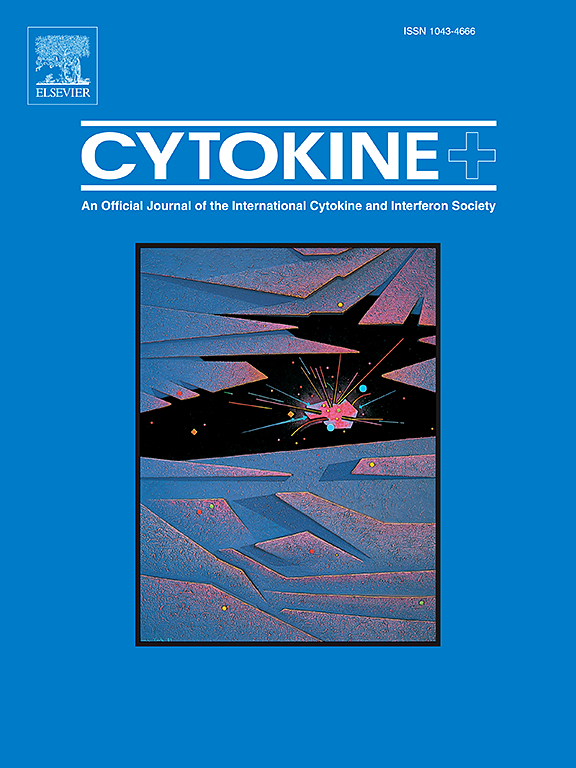胰岛素生长因子2有助于脂肪干细胞衍生的外泌体介导的血管生成对抗后肢缺血损伤
IF 3.7
3区 医学
Q2 BIOCHEMISTRY & MOLECULAR BIOLOGY
引用次数: 0
摘要
下肢动脉硬化闭塞症患者发生灌注不足时,严重肢体缺血是一个严重的阶段。外泌体已成为治疗下肢缺血的重要药物。然而,这些外泌体如何对缺血肢体起作用尚不清楚。胰岛素样生长因子II (IGF2)是指导血管生成的关键蛋白。将小鼠缺血肢体分别注射磷酸缓冲盐水(PBS)、小鼠脂肪源性干细胞外泌体(ADSC-Exo)和IGF2特异性敲除的ADSC-Exo (IGF2−/−-Exo),并在注射后21天检测血流量。动态肢体运动和损伤水平通过运动障碍和组织损伤评分进行评估。采用激光多普勒成像测量缺血肢体血流。通过分子生物学实验探讨ADSC-Exo介导的肢体缺血损伤保护机制。与未治疗组相比,注射ADSC-Exo可显著促进缺血后肢的血流灌注,而敲除IGF2则使ADSC-Exo的治疗效果减弱。IGF2−/−- exo处理组CD31+的荧光强度低于ADSC-Exo处理组。adsc - exo处理组内皮细胞的管状结构明显多于pbs处理组,而IGF2 - / - exo处理组内皮细胞的管状结构少于adsc - exo处理组。ADSC-Exo可上调内皮细胞中p-PI3K、p-AKT和p-eNOS的蛋白水平,而敲除igf2则可抑制其向激活状态的促进。我们的研究表明,表达igf2的ADSC-Exo对与PI3K-Akt-eNOS通路相关的肢体缺血损伤具有强大的促增殖和血管生成作用。本文章由计算机程序翻译,如有差异,请以英文原文为准。

Insulin growth factor 2 contributes to adipose stem cell-derived exosome mediated angiogenesis against hind-limb ischemia injury
Critical limb ischemia is a severe stage when hypoperfusion occurs in patients with lower extremity arteriosclerotic obliterans. Exosomes have emerged as a key therapeutic agent for lower extremity ischemia. However, how these exosomes take effects on ischemic limb is still unknown. Insulin-like growth factor II (IGF2) is a key protein responsible for guiding angiogenesis. Mouse ischemic limb was injected with phosphate buffer saline (PBS), exosomes from murine adipose-derived stem cells (ADSC-Exo) and IGF2-specific knockout of ADSC-Exo (IGF2−/−-Exo), respectively, then blood flow was detected at 21 days after injection. The level of dynamic limb movement and impairment were assessed by ambulatory impairment and tissue damage scores. Laser Doppler imaging was performed to measure the blood flow of the ischemic limbs. Molecular biology experiment is performed to investigate the mechanism of ADSC-Exo mediated limb protection against ischemia injury. Compared with the untreated group, ADSC-Exo injection significantly promoted blood perfusion of ischemic hind limbs, while knockout of IGF2 weakened the therapeutic effect of the ADSC-Exo. The fluorescence intensity of CD31+ in the IGF2−/−-Exo-treated group was lower than that in the ADSC-Exo group. Tubular structures of endothelial cells in ADSC-Exo-treated group were significantly more than those in PBS-treated group, while endothelial cells in IGF2−/−-Exo-treated group formed fewer tubular structures than those in ADSC-Exo-treated group. The protein levels of p-PI3K, p-AKT and p-eNOS in endothelial cells were upregulated by ADSC-Exo whereas IGF2-knockout impaired this promotion to activation states. Our study demonstrated that IGF2-expressing ADSC-Exo exerted a potent pro-proliferative and angiogenic effects against limb ischemia injury associated with the PI3K-Akt-eNOS pathway.
求助全文
通过发布文献求助,成功后即可免费获取论文全文。
去求助
来源期刊

Cytokine
医学-免疫学
CiteScore
7.60
自引率
2.60%
发文量
262
审稿时长
48 days
期刊介绍:
The journal Cytokine has an open access mirror journal Cytokine: X, sharing the same aims and scope, editorial team, submission system and rigorous peer review.
* Devoted exclusively to the study of the molecular biology, genetics, biochemistry, immunology, genome-wide association studies, pathobiology, diagnostic and clinical applications of all known interleukins, hematopoietic factors, growth factors, cytotoxins, interferons, new cytokines, and chemokines, Cytokine provides comprehensive coverage of cytokines and their mechanisms of actions, 12 times a year by publishing original high quality refereed scientific papers from prominent investigators in both the academic and industrial sectors.
We will publish 3 major types of manuscripts:
1) Original manuscripts describing research results.
2) Basic and clinical reviews describing cytokine actions and regulation.
3) Short commentaries/perspectives on recently published aspects of cytokines, pathogenesis and clinical results.
 求助内容:
求助内容: 应助结果提醒方式:
应助结果提醒方式:


